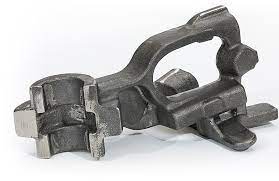Ductile iron casting is a versatile and widely used casting process that involves the production of components and parts using molten ductile iron, a type of cast iron known for its remarkable mechanical properties, including high strength, toughness, and ductility. Ductile iron casting holds a significant place in modern manufacturing due to its exceptional combination of attributes, making it suitable for a diverse range of applications across various industries.
Ductile iron, also known as nodular cast iron or spheroidal graphite iron, is produced by adding small amounts of magnesium or other rare earth elements to molten iron. This alloying process alters the graphite microstructure within the iron matrix, transforming the flaky, brittle graphite of conventional cast iron into spherical nodules. These nodules lend ductile iron casting its remarkable mechanical properties, including higher tensile strength and elongation compared to traditional gray cast iron.
The process of ductile iron casting involves several stages, from pattern design to casting and finishing. Here is an overview of the key steps:
1. Pattern Creation: The casting process begins with the creation of a pattern, often made of wood, plastic, or metal. The pattern is an exact replica of the desired final part and is used to create the mold.
2. Mold Preparation: A mold is created by packing a mixture of sand and binder material around the pattern. The mold is typically made in two halves, known as the cope and drag, which are joined to create the complete mold cavity.
3. Melting and Pouring: Ductile iron is melted in a furnace and brought to the desired temperature. Once molten, it is poured into the mold cavity, filling the space around the pattern.
4. Solidification and Cooling: The molten iron cools and solidifies within the mold, taking the shape of the pattern. As it solidifies, the spherical graphite nodules form, giving the iron its unique properties.
5. Shakeout and Cleaning: After cooling, the mold is removed, and the casting is shaken out to remove excess sand and other debris. The casting is then cleaned and inspected for defects.
6. Machining and Finishing: Depending on the requirements of the final part, additional machining and finishing processes may be applied to achieve the desired dimensions and surface quality.
Compared to other casting processes, ductile iron casting offers distinct advantages:
1. Mechanical Properties: Ductile iron casting provides excellent strength, toughness, and ductility, making it suitable for components subjected to heavy loads and dynamic stresses.
2. Design Flexibility: Ductile iron can be cast into intricate and complex shapes, allowing for innovative and efficient designs.
3. Cost-Effectiveness: The process is cost-effective for both small and large production runs, making it a viable option for a wide range of applications.
4. Versatility: Ductile iron casting finds applications in various industries, including automotive, construction, agriculture, and industrial machinery.
5. Environmental Considerations: Ductile iron is highly recyclable, contributing to sustainability efforts.
However, ductile iron casting also has some limitations and challenges. It may not be suitable for certain high-precision parts due to the potential for dimensional variations and surface finish issues. Additionally, the casting process requires careful control of variables such as pouring temperature and cooling rates to ensure consistent quality.
In conclusion, ductile iron casting is a valuable casting process that capitalizes on the unique properties of ductile iron, resulting in components with exceptional mechanical characteristics. Its ability to produce robust and durable parts, coupled with its cost-effectiveness and design flexibility, makes it a preferred choice for many manufacturing applications. As technology continues to advance, innovations in ductile iron casting processes may further enhance its capabilities and expand its range of applications in the ever-evolving landscape of modern manufacturing.




